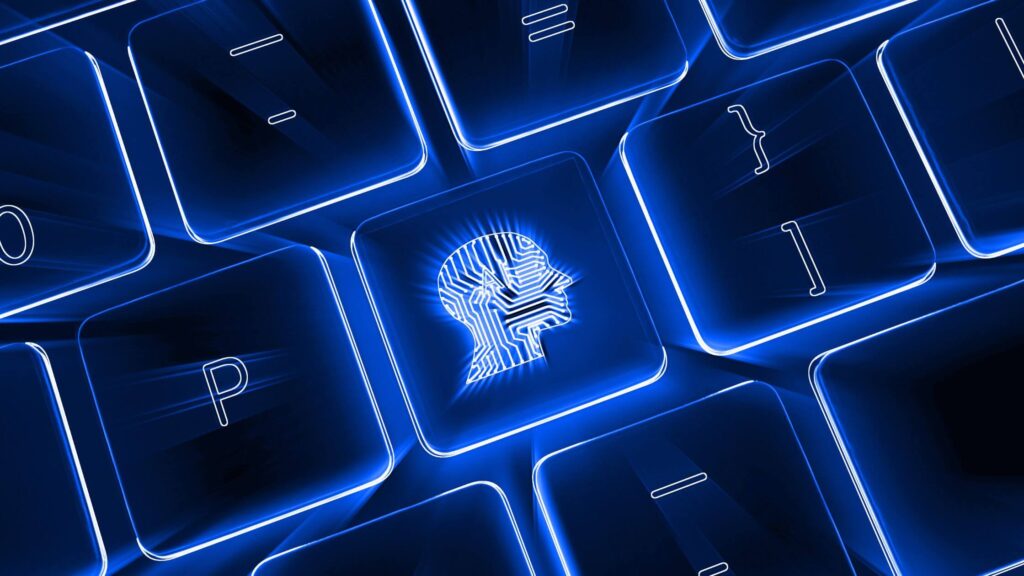In the rapidly evolving landscape of cybersecurity, where threats are becoming more sophisticated and diverse, the role of artificial intelligence (AI) in penetration testing has emerged as a game-changer. As organizations strive to fortify their digital defenses against an ever-expanding array of cyber threats, the integration of AI into penetration testing practices is proving to be a revolutionary force.
Penetration testing, also known as ethical hacking, has traditionally relied on manual techniques to identify vulnerabilities in a system. However, with the advent of AI, the dynamics of penetration testing are undergoing a profound transformation. This blog seeks to explore the burgeoning influence of AI on penetration testing, unraveling the ways in which AI is reshaping cybersecurity.

Can AI do penetration testing?
Yes, AI can be used in penetration testing, and it is increasingly being integrated into cybersecurity tools and processes. Penetration testing, also known as ethical hacking, involves assessing the security of computer systems, networks, or applications to identify and address vulnerabilities before malicious hackers can exploit them.
AI can assist in penetration testing in several ways:
- Automated Vulnerability Scanning: AI-powered penetration testing tools can automatically scan networks and systems to identify known vulnerabilities. These tools use databases of known vulnerabilities and can quickly assess large systems, saving time compared to manual testing.
- Machine Learning for Anomaly Detection: Machine learning algorithms can analyze normal network behavior and identify anomalies that may indicate potential security threats. This can help in detecting previously unknown or zero-day vulnerabilities.
- Automated Exploitation: Some AI-driven tools are capable of automating the exploitation of vulnerabilities, allowing security professionals to understand the impact of specific vulnerabilities on a system.
- Adaptive Testing: AI can adapt its testing strategies based on the evolving threat landscape. It can prioritize high-risk areas and adjust testing methodologies to stay ahead of potential attackers.
- Red Team Automation: Red teaming involves simulating real-world cyber-attacks to test an organization’s defenses. AI can assist in automating certain aspects of red teaming, making the testing process more efficient and comprehensive.
- Behavioural Analysis: AI can analyze the behavior of applications and users to detect suspicious activities or potential security breaches. This helps in identifying threats that may not be apparent through traditional rule-based approaches.
What are the Advantages of AI Penetration Testing?
Increased efficiency
AI can assist security teams in efficiently allocating resources by identifying the most critical vulnerabilities and high-risk areas. This prioritization ensures that remediation efforts are focused on the most impactful issues, optimizing resource utilization.
Improved accuracy
By automating specific elements of penetration testing to computers you can increase accuracy of your testing. Humans are more likely to make errors performing a process manually then an AI is when performing an automated process.
Reduced costs
Employing AI to supplement your penetration testing process can reduce costs by lower your dependence on highly paid cybersecurity professionals. This is best done with routine tasks that can be easily automated or it can be used to speed up other processes, which reduces the total time required to perform the test and therefore reduces costs.
Continuous testing
AI can provide continuous monitoring for security threats and vulnerabilities, reducing the need for periodic, resource-intensive penetration tests. This ongoing monitoring can help organizations identify and address issues in real-time, potentially preventing more significant security incidents.
Improved security posture
AI can adapt its testing strategies based on the evolving threat landscape, allowing organizations to stay ahead of potential attackers. This adaptability ensures that penetration testing efforts remain relevant and effective over time, reducing the need for frequent manual adjustments.
5 ways that AI is used in Modern Life
What are the Disadvantages of AI Penetration Testing?
Skills Gap
The effectiveness of AI penetration testing depends heavily on the quality and diversity of the training data. If the training data is not comprehensive or representative of real-world scenarios, the AI model may struggle to identify vulnerabilities compared to a skilled professional accurately.
Algorithmic Biases
AI models can inherit biases present in the training data, potentially leading to skewed results. This bias can impact the accuracy of vulnerability assessments and may disproportionately affect certain groups or types of systems
Risk of false positives or negatives
- False Positives: AI systems may generate false positives, indicating vulnerabilities that do not actually exist. This can lead to wasted time and resources as security teams investigate non-existent issues.
- False Negatives: On the other hand, AI may miss certain vulnerabilities, providing a false sense of security. This could leave actual weaknesses undiscovered, posing a risk to the system.
Will AI Take Over Penetration Testing?
AI (Artificial Intelligence) has the potential to play a significant role in penetration testing, but it is unlikely to completely take over the entire process. Penetration testing involves assessing the security of a system, network, or application by simulating cyberattacks to identify vulnerabilities and weaknesses. While AI can enhance certain aspects of penetration testing, there are several reasons why human involvement will likely remain crucial:
- Complexity and Creativity: Penetration testing often requires creative thinking and the ability to adapt to new and unexpected situations. Human testers are adept at approaching problems from different angles and can think creatively to discover vulnerabilities that may not be apparent to automated tools.
- Contextual Understanding: Humans possess a deep understanding of business contexts, industry-specific requirements, and the unique characteristics of the systems they are testing. This contextual awareness allows human testers to make judgment calls and prioritize findings based on the specific needs of the organization.
- Adaptability: Cyber threats are constantly evolving, and new attack techniques emerge regularly. Human penetration testers can quickly adapt to these changes, learning and applying new methods and strategies as needed. AI systems, while powerful, may struggle to keep up with the pace of evolving threats without human guidance.
- Communication Skills: Human penetration testers are often required to communicate findings, risks, and recommended remediation measures to various stakeholders. Effective communication, both written and verbal, is a critical aspect of penetration testing that relies on human expertise.
While AI can be a valuable asset in penetration testing by automating certain tasks, augmenting human capabilities, and improving efficiency, the human element is likely to remain essential for the foreseeable future.
Conclusion
In conclusion, the impact of AI on penetration testing is undeniable, bringing both opportunities and challenges to the field of cybersecurity. AI technologies have significantly enhanced the efficiency, speed, and scalability of certain aspects of penetration testing, automating routine tasks, and providing valuable insights into potential vulnerabilities. However, it’s important to recognize that AI is not a silver bullet and is unlikely to replace human expertise entirely. Contact us at Oppos cybersecurity today.
AI Penetration Testing FAQS
AI can be leveraged by hackers to create more complex exploits.
It is primary used for automation of tasks and complex behaviour analysis.
Not likely, human creative, innovation and communication skills are still very important.






